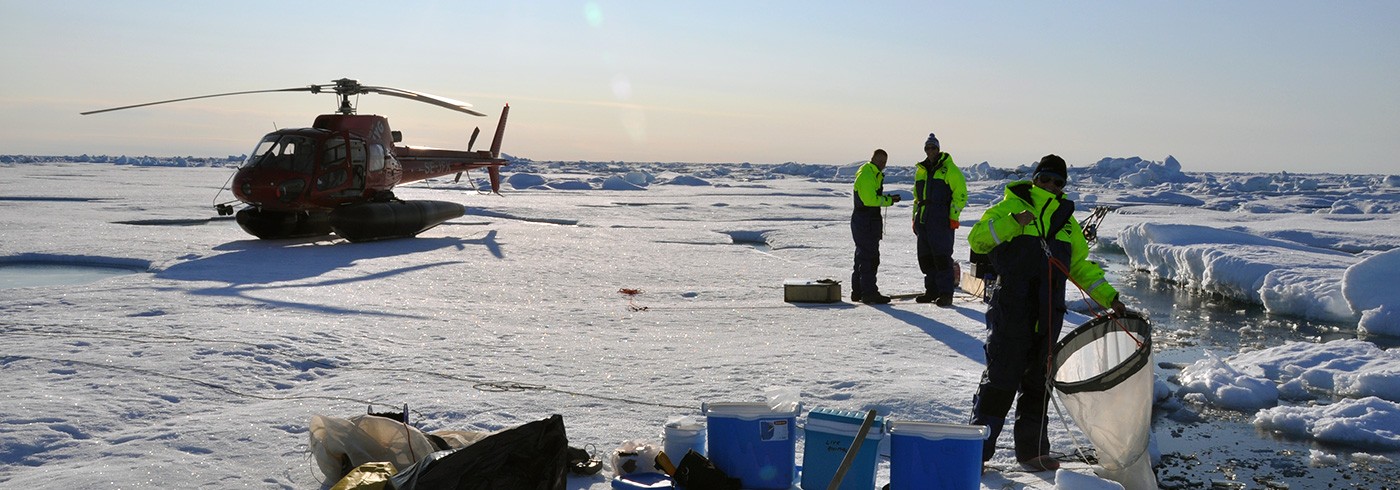Piston coring in the central Arctic with icebreaker Oden
31 July 2012 - 14 September 2012
Jack Schilling and Markus Karasti handled the 1.5 ton piston corer on Oden’s fan tail. Photo: Björn Eriksson
How and why has Arctic sea ice cover varied in the recent geologic past? In the project Palaeoceanography of the Arctic – Water Masses, Sea Ice, and Sediments (PAWS), we utilise the new sea ice proxy IP25, a biomarker from ice algae, together with other proxy data, to study the variability in sea ice cover over time. We will also use neodymium isotopes to reconstruct past variations in water masses, especially warm Atlantic inflow, to investigate how it has influenced sea ice cover in the past. The analyses will be performed on 10 new sediment cores from the central Arctic Ocean retrieved during the LOMROG III expedition in August–September 2012, along with previous cores from our repository at Stockholm University.
The Arctic sea ice cover, an important part of global climate and ecosystems, has been declining at an increasing rate since at least 1979. September sea ice extent in 2012 was at a new record low. We need to assess past changes in sea ice coverage and water masses to get a better understanding of the causes, processes, and consequences of the modern decline.
Our work focuses on the Lomonosov Ridge between Greenland and the North Pole. In the summer of 2012, we collected sediment cores and geophysical data using the icebreaker Oden, one of the few research vessels capable of breaking the thick polar ice. Oden’s multibeam echosounder and sub-bottom profiler were used to map the sea floor and identify coring targets, and a new winch from the Swedish Polar Research Secretariat was used for handling the 1.5-ton piston corer in water depths down to >4 km.
The sediment cores recovered during LOMROG III come from an under-sampled region of the Lomonosov Ridge. Combined with existing sediment cores from the central Arctic, they will allow us to better constrain spatial changes in sea ice cover and drift patterns. Analyses of the cores are now underway at Stockholm University, and the first samples for IP25 will be analysed during spring 2013.
Results from this expedition will be published in peer-reviewed journals during 2013. Collected data will be accessible from the Bert Bolin Centre for Climate Research (BBCC) data repository. Metadata can be obtained upon request to Richard Gyllencreutz.









